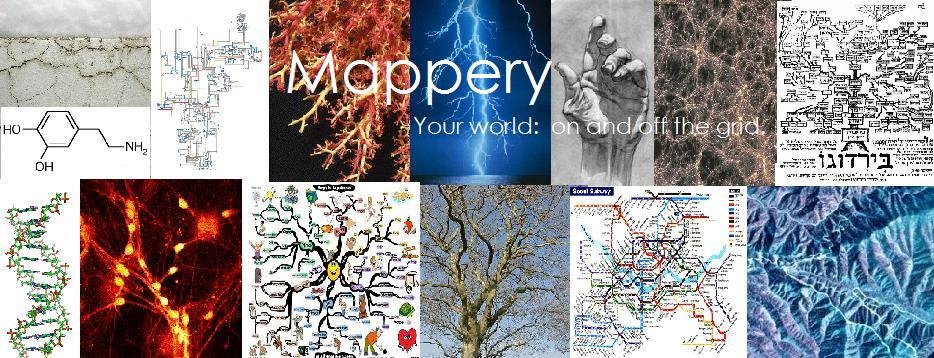
What is this?
Some sort of rare fossil formed in glass or crystal? Seaweed or ferns imprinted into ice? No, this is something you could make. It is a natural fractal pattern formed by air displacing a vacuum that resulted from pulling two glue-covered acrylic sheets apart.
And you thought that any sort of (productive) play with glue ended after Kindergarten ...
Welcome to this blog.
The header of this page includes images representing different types of maps - some of which are fractals and some that are not.
If you're curious, these images are:
Top Row (from left to right):
Snow on top of cracking masonry (first), the structural formula of dopamine (below masonry), a power grid, a cast of the human lungs and circulatory system, lightning, a hand (palm), the universe, a family tree

Bottom Row (from left to right):
DNA, neural networks, a mindmap, a tree with bare branches, Seoul's subway system, a mountain range
Want to make your own fractals, sans paste?
- Make fractal cookies with the help of Evil Mad Scientist Laboratories
- Be inspired to make your own 3D Fiction
- Or make music with fractals at Fractal Vibes or Music in the Numbers
Have any other online examples or tools to share for making fractals? Please share them!





